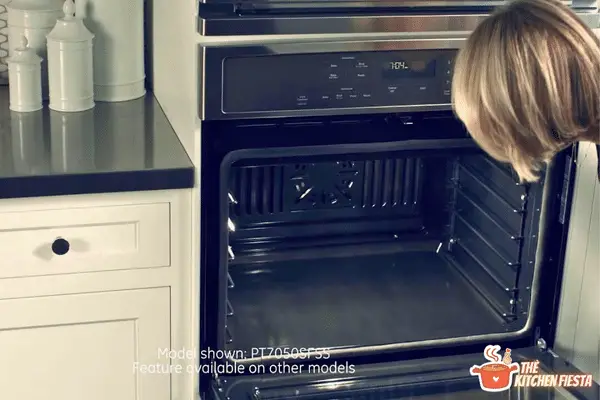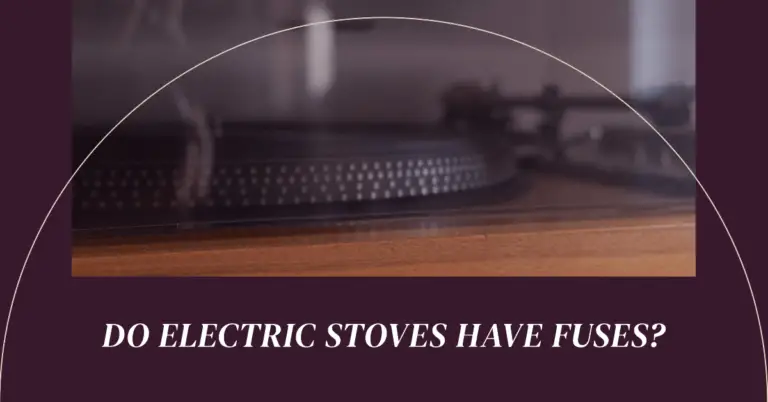hidden bake element pros and cons: What You Need to Know

One of the decisions you’ll have to make is whether to go for a model with a hidden bake element or a traditional one. Hidden bake elements are becoming increasingly popular, but are they worth the extra cost? In this article, we’ll explore the pros and cons of hidden bake elements to help you make an informed decision.
Let’s begin by defining the concept of a hidden bake element. Unlike conventional ovens with visible heating elements at the bottom, hidden bake elements are discreetly positioned beneath the oven floor. This design feature not only facilitates easier oven cleaning but also provides the added advantage of maximizing interior space.
This becomes particularly beneficial when cooking sizable items such as turkeys or roasts. Another notable advantage of hidden bake elements is their enhanced protection against damage from spills or splatters. However, it’s important to acknowledge that hidden baked elements have a few drawbacks, including a higher initial cost and longer preheat times.
What is a Hidden Bake Element?
A hidden bake element is an oven heating element located underneath the oven floor and is not visible from inside the oven. Instead of being exposed to the oven’s interior, the element is concealed under a non-removable porcelain enameled oven floor. This design provides a sleek and stylish look to the oven while making it easier to clean.

The hidden bake element helps to distribute heat evenly throughout the oven, improving the quality of baked goods. Since the element is located underneath the oven floor, it allows for more consistent and even heating throughout the oven. This can result in more evenly baked food and better cooking results.
There are some downsides to a hidden bake element. One of the main drawbacks is that it takes longer to preheat the oven, and the baking time required may be slightly longer than with a traditional baked element. Additionally, the purchase price of a range with a hidden bake element may be slightly higher than a traditional oven.
Here are some pros and cons of a hidden bake element:
| Pros | Cons |
| Easy clean-up | Higher purchase price |
| Sleek and stylish | Stretched preheat times |
| More interior space | Harder to replace |
| Better element protection |
Hence, a hidden bake element can be a great addition to your oven if you prioritize even heating and easy cleaning. Weigh the pros and cons before making a purchase decision.
Pros of a Hidden Bake Element
The type of baked element is one of the most important considerations. Hidden baked elements have become increasingly popular due to their many advantages.
1. Even Heat Distribution:
A notable advantage of hidden bake elements is their ability to ensure consistent heat distribution throughout the oven. Positioned beneath the oven floor, these elements promote uniform heating, resulting in well-cooked and evenly baked food without any areas of uneven temperature.
2. Easy Cleaning:
Hidden bake elements offer the convenience of effortless cleaning. Unlike exposed traditional baked elements that can accumulate food debris and spills, hidden elements are located beneath the oven floor. This eliminates hard-to-reach areas where residue can gather, simplifying the cleaning process and reducing the time required for maintenance.
Related Article:
3. Increased Baking Space:
Hidden baked elements also provide additional space for baking purposes. With the element positioned beneath the oven floor, more room is available for accommodating baking pans and dishes. This proves particularly advantageous for individuals who frequently bake larger quantities of cookies, cakes, or other baked goods.
Drawbacks of a Hidden Bake Element:
While hidden bake elements come with several advantages, it is important to consider potential drawbacks before purchasing. Here are some cons to be aware of:
1. Higher Repair Costs:
One significant disadvantage of hidden bake elements is the potential for higher repair costs. Due to their placement beneath the oven floor, accessing and replacing a hidden element can be more challenging and time-consuming. In the event of an element failure, removing and replacing the entire oven floor may be necessary, leading to increased expenses.
2. Limited Broiling Capabilities:
Hidden bake elements may have limited broiling capabilities. Broiling typically requires direct heat from the top of the oven, which may not be achievable with a hidden element. If you frequently use your oven for broiling, consider a range with an exposed broil element to ensure optimal broiling performance.
3. Potential for Uneven Baking:
While hidden bake elements generally promote even heating, there is a potential for uneven baking if the element is not properly calibrated or if the oven is not adequately preheated for the recommended duration. This can result in consistency in the doneness of food items, leading to overcooked or undercooked portions.
Carefully evaluate your cooking and baking needs, budget, and repair expectations before deciding on a hidden bake element. Understanding these potential drawbacks will help you make an informed choice that aligns with your requirements.
Must Check:
Bottom Line
After examining the advantages and disadvantages of hidden baked elements, it is clear that they offer certain benefits but also have drawbacks. Hidden bake elements provide improved heating efficiency, consistent and even heating, and easier cleaning due to their placement beneath the oven floor.
However, they come with a higher purchase price, longer preheat times, and slightly longer baking durations. The even heating provided by hidden baked elements enhances cooking and baking results. At the same time, the easy-to-clean design minimizes maintenance efforts.
On the other hand, the higher cost and extended preheating may be considered disadvantages for some individuals who prioritize affordability and quick cooking. Ultimately, choosing hidden bake elements depends on personal preferences regarding heating consistency, cleaning convenience, budget, and time considerations.
FAQs – hidden bake element pros and cons
Do concealed heating elements influence the cooking duration of food?
Utilizing a concealed heating element results in a minor disparity in cooking time. Due to the extended period required for the oven to preheat, the baking duration may be marginally longer than a conventional heating element. Nonetheless, this discrepancy is generally inconspicuous and may fluctuate depending on the specific oven model.
Are concealed heating elements pricier than traditional ones?
Indeed, ovens with concealed heating elements cost more than those with traditional heating elements. Nevertheless, the price discrepancy has diminished since its initial introduction to the market. The augmented purchase price may be worthwhile for individuals prioritizing effortless cleaning and an elegant appearance.
Can concealed heating elements be easily replaced?
Replacing a concealed heating element can be more challenging than replacing a traditional one. This is attributed to the element’s positioning at the oven’s base, rendering it invisible. It is advisable to engage a professional for the replacement procedure if needed.
Do concealed heating elements offer more internal capacity?
A concealed heating element can provide increased interior space within an oven. Under the element’s placement at the oven’s base, no exposed component occupies space. This feature can benefit individuals requiring additional room for larger culinary preparations or multiple items.
Are there any drawbacks to utilizing a concealed heating element?
While numerous benefits are associated with using a concealed heating element, it is crucial to consider potential downsides. Alongside the higher purchase price, lengthened preheating times, and the difficulty of replacement, some individuals may observe an impact on the even distribution of heat due to the element’s location. However, this aspect can fluctuate depending on the oven model and personal preferences.






